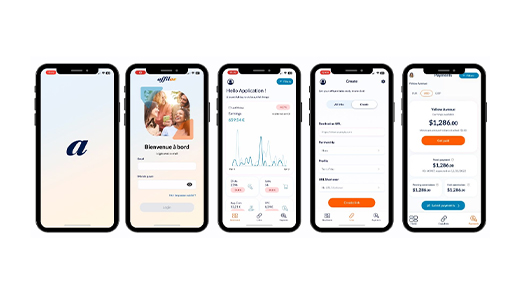6 types of affiliate fraud and how to prevent them with Affilae!
Let’s try to be pragmatic in order to popularise the subject. When we talk about affiliate fraud, we are raising a heavy subject which is difficult for the majority of marketers to realise, as the technicality involved in identifying, controlling and finding native answers to them is sometimes complex.
It is on this type of unrecognised fraud that ill-intentioned publishers earn obscene amounts of money at the expense of brands and the qualified traffic they expect from this lever.
It is even more problematic that some market players, paid in whole or in part on the basis of advertisers’ sales, have little real desire to change the situation without undermining their historical business model.
This is the thorny ethical issue of being judge and jury in the recommendations they can make to their clients.
So do we change nothing and ride the was as long as we can?
Or do we grab the bull by the horns to clean up an acquisition lever with untapped potential?
At Affilae, since 2012, we have been condemning these practices and have been implementing more transparent and equitable affiliations in order to restore a balance between brands and advertisers. A healthy relationship on which to build sustainable partnerships, where each actor finds added value.
It is this motto that has naturally led us to identify the most widespread affiliate frauds and to provide native responses to them within affiliate programmes.
So what are the most common affiliate frauds and what answers does Affilae provide?
Cookie Stuffing / Dropping
Definition
Via automated mechanisms (js, PHP script, iframe, pixel img .htaccess redirects etc.), an affiliate will force the deposit of a cookie on the user’s computer, without the user even taking any action, such as a click, so that the user does not really see the advertisements. These are often invisible pixels.
So when the user buys on one of the e-commerce sites for which he has received a fraudulent cookie, the conversion is automatically attributed to the affiliate partner (fraudster) and he receives the commission associated with the sale.

This makes the brand think the cookie is legitimate, but it is not.
➜ Cookie Stuffing contributes to the majority of affiliate fraud.
Affilae’s Response
A “a priori” treatment (and not “a posteriori”)
Even if you have accepted an affiliate on your affiliate program who uses cookie stuffing techniques, Affilae protects you from this by using our javascript tracking technology.
This anti-fraud technology (proprietary) will detect a human mouse movement on the page to ensure that we are dealing with a human, before triggering the tracking (cookie in particular).
Some players on the market offer post-processing, but Affilae’s response is native, so you block any attempt at cookie detection beforehand.
You avoid paying commissions on fraudulently acquired conversions and you preserve your marketing budget to invest in other levers.
Above all, you avoid frustrating your partners by keeping away from high cancellation rates!
Bidding on brand name (SEA, PPC)
The case,
Again, a classic, but let’s take a concrete example:
1) This morning, while validating new partnership requests on your program, you accepted a qualitative blog.
2) Very soon after, you receive hundreds of clicks and conversions from this blog.
Legitimately, your reaction is to look to see where exactly you are being promoted, in which articles or network?
3) By analysing the purchases and referral paths, you realise that the referrer is systematically Google.com
But why?

Look no further, this affiliate with a quality blogger profil has got you!
Under the disguise of a blog, he’s probably actually buying your brand’s keyword on Google at times when you’re out of the office.
Our Response,
Affilae tracks your conversion funnels on the affiliate marketing lever and allows you to have all the details on them: landing-page, referrer, advertising elements used, etc.
It’s transparent for everyone: affiliates and brands.
We also provide you with an analysis of the incoming click logs, allowing you to see at a glance whether this is considered as buying traffic on the search engines. Automated notification.
Don’t let affiliates cannibalise your natural branded traffic and pay them extra for it!
Duplicate conversion
The case,
It also happens that conversions can be duplicated. Why is this? Tracking error, permissive tracking technology etc.
Ou Response,
At Affilae, we automatically block the return of a second identical conversion ID, making fraud impossible.
The precise tracking of the conversion path also allows us to give you full visibility of the affiliates triggered and their position within the conversion funnel.
Affiliate Fraud: Voucher codes
One of the most typical affiliate frauds when using voucher code sites on your affiliate program.
Let’s be clear, voucher code websites are the most common type of page in existence. So depending on your sector of activity you need them to maintain a high conversion rate. Yes, but at the right price!
The case: the price to pay!
It’s all about the notion of valid voucher codes.
90% of coupon code sites are not clean!
This means that when you distribute a voucher code to an affiliate to share, you must have a close eye on it.
For example, you accept a voucher code site on your program, and without you even providing them with codes yet, they generate conversions for you… But how?
➜ It’s very likely that this site has created a record in your name, that visitors typing “Promo Codes” + your brand name” go through this site, and then buy from you without even getting a valid code.
But it’s too late! When the user clicks on this site that redirects to you, the cookie is dropped and the affiliate will earn a commission.
➜ Another example: the site displays an invalid promo code or indicates a good deal, without even retrieving the code, the Internet user is redirected and the affiliate deposits his cookie… the pattern repeats itself.
Our Response
Of course you can export the previous month’s conversions at the beginning of the month and refuse fraudulent conversions that do not have valid promo codes.

However, we recommend that you use our dedicated coupon code tracking method instead.
This allows you to assign a unique code to an affiliate and only commission them when that code shows up on your sales.
Don’t pay affiliates for invalid or expired voucher codes.
Geolocation Fraud
Did you know?
Conversions on your programme can come from countries from which you do not want to include the conversion feedback.
For example, when you have geo-localised lead acquisition campaigns or affiliate campaigns in several countries.
![]() Affilae offers geo-targeted campaigns that allow you to collect traffic and conversions only from the geographical areas you target.
Affilae offers geo-targeted campaigns that allow you to collect traffic and conversions only from the geographical areas you target.
Traffic and conversions outside the defined restrictions are still identified but ignored by our algorithm.
The guarantee that your geographical segmentation criteria will be respected.
Iframe stuffing
The cas,
This is a variant of cookie stuffing. The idea is for the fraudulent publisher to load your site in an iframe, often invisible to the Internet user. When the user navigates to the publisher’s site, the iframe is triggered and can load affiliated pages.
In practice, the advertisements are loaded and the fraudulent partner can thus multiply the locations and impressions from the same visit. It is therefore fictitious traffic.
➜ Ex: <iframe src= “https://www.website.com/l117837/Nouveautes-Jouets ” style=”visibility: hidden;”></iframe>
Our Response,
Our tracking technology embeds mechanisms that will, on activation, be able to block your site from being embedded in third party iframes.
You gain more qualified traffic and a more accurate measurement of the performance of your advertising campaigns.
Photo by Bermix Studio on Unsplash




